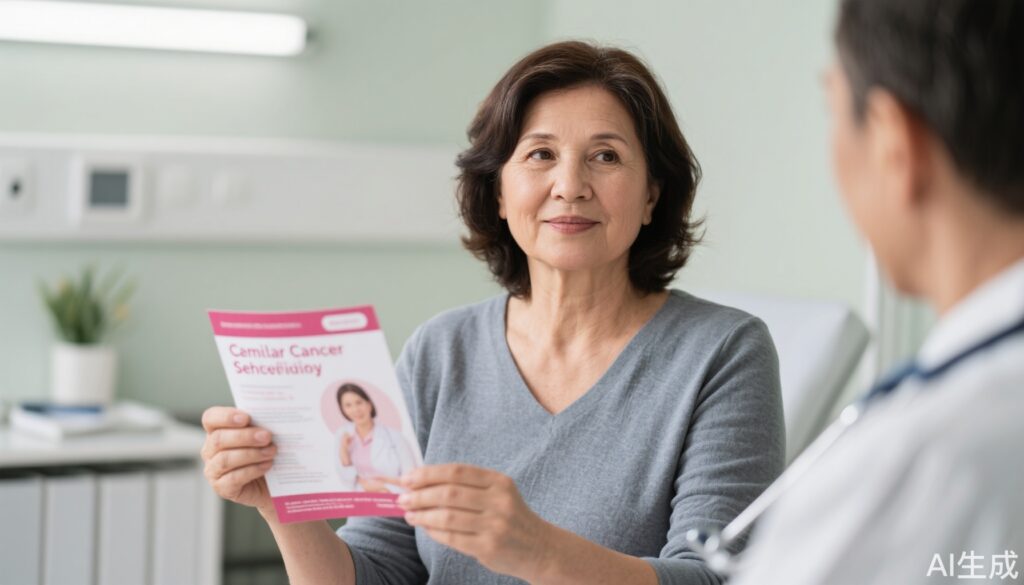Cervical cancer remains a significant global health concern, with human papillomavirus (HPV) being the primary causative agent. While efforts to reduce cervical cancer incidence through vaccination and routine screening have shown success, emerging data challenges conventional practices, particularly for women aged 65 years and older. Historically, clinical guidelines have suggested discontinuing routine cervical cancer screening for women over 65 with prior normal results. However, recent findings indicate that this age group may still be at considerable risk, necessitating a reevaluation of screening protocols.
Scientific and Clinical Evidence: What the Data Tell Us
Recent research published in *Gynecology and Obstetrics Clinical Medicine* highlights the need for vigilance in older women regarding cervical cancer screening. The study examined data from 2,152,766 women screened between 2017 and 2023 across 628 healthcare facilities in Shenzhen, China. The findings revealed that women aged 65 and above demonstrated higher prevalence rates of high-risk HPV (hr-HPV) positivity, cervical intraepithelial neoplasia grade 2 or worse (CIN2+), and cancer compared to younger counterparts. Specifically:
– hr-HPV positivity: 13.67% in women aged 65+, compared to 8.08% in those younger.
– CIN2+ occurrence: 3.33% in older women, versus 1.55% in the younger demographic.
– Cervical cancer prevalence: 0.92% in older women, significantly higher than the 0.1% observed in younger women.
Additionally, the study identified distinct hr-HPV genotype distributions in older women, with HPV 52, 16, 58, 56, and 86 being the most common.
Misconceptions and Harmful Behaviors
The prevailing misconception that women over 65 are at minimal risk of cervical cancer often leads to discontinuation of screening practices. This notion stems from previous data suggesting that persistent HPV infections decrease with age. However, the new research underscores the reality that older women may face reactivation of latent HPV infections or new exposures, increasing their vulnerability. Furthermore, low HPV vaccination rates among older women exacerbate the problem. As the data from Shenzhen shows, only 2.25% of the studied population reported HPV vaccination, leaving the vast majority without this preventive measure.
Correct Health Practices and Practical Recommendations
To address the rising risk of cervical cancer in older women, healthcare professionals and policymakers must advocate for continued screening. Here are practical recommendations:
1. Revising Screening Guidelines: National and international health organizations should consider updating guidelines to recommend routine HPV and cytology screenings for women aged 65 and above, particularly those with abnormal previous results or risk factors.
2. Tailored Screening Methods: Employing advanced techniques such as HPV genotyping and colposcopy can aid in early detection. Shenzhen’s screening approach, which combines HPV testing with cytology and colposcopy referrals for abnormal results, provides a strong model.
3. Increasing Awareness: Public health campaigns must emphasize the importance of screening in older women, dispelling myths about negligible risk.
4. Promoting HPV Vaccination: Although vaccination is more effective when administered before HPV exposure, older individuals who have not been vaccinated may still benefit from protection against certain HPV types.
Expert Insights and Commentary
Dr. Mei Lin, a leading gynecologic oncologist, emphasizes the importance of continued screening for older women. “The data from Shenzhen clearly demonstrates that cervical cancer risk does not vanish past the age of 65. Screening remains a cornerstone of prevention, especially for populations with limited access to vaccination.”
Similarly, Dr. Jane Carter, a public health advocate, calls for global attention to this issue. “Countries must adapt screening protocols to reflect local conditions and emerging evidence. This is particularly critical as populations age and healthcare systems strive for equitable care.”
Conclusion
Emerging research challenges the traditional approach to cervical cancer screening in women aged 65 and older, highlighting a continued risk from HPV infections. With increased prevalence of hr-HPV and associated conditions, healthcare systems must reconsider guidelines and implement strategies to ensure older women receive appropriate preventive care. By adapting policies and raising awareness, we can make strides in reducing cervical cancer incidence and mortality in this vulnerable age group.
References
– Women 65+ still at heightened risk of cervical cancer caused by HPV. BMJ Group. July 1, 2025. Accessed July 9, 2025. https://www.eurekalert.org/news-releases/1089214.
– Ye Z, Wang H, Zhong Y, et al. High-risk HPV distribution and importance of continuing cervical cancer screening of women aged 65 years and older: a study based on 2 152 766 women in China. Gynecology and Obstetrics Clinical Medicine. 2025;5(2).



